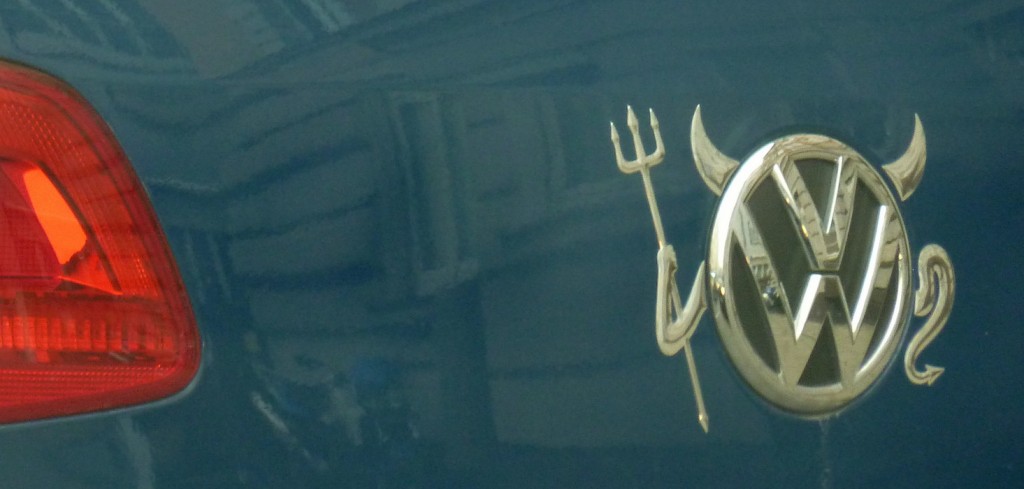
Volkswagen’s CEO, Martin Winterkorn, recently stepped down amid a scandal over manipulated emissions tests. Researchers at West Virginia University found that VW diesel models used “defeat devices” that activated emission control systems only when being tested—that’s how they dodged emissions standards set by the Environmental Protection Agency. To what extent is Winterkorn responsible for this corporate skullduggery? And does the use of these devices constitute a “crime”?
Classic theories about corporate scandal stress “amoral calculus,” where individual decision makers of an organization weigh the costs and benefits of their actions. One example is the Ford Pinto debacle, when the company failed to recall Pintos with defective gas tanks because its “internal ‘cost-benefit analysis’” indicated the financial costs of a recall outweighed the potential cost of human lives (Dowie 1977). The media often responds to these corporate scandals by labeling white-collar criminals “bad apples,” shifting the public’s attention to the guilt of individual decision makers while hiding the social context that shapes norms within organizations
- Robert A. Kagan, and John T. Scholz. 1984. “The ‘criminology of the corporation’ and regulatory enforcement strategies,” In Enforcing Regulation, eds. Keith Hawkins and John M. Thomas, 67-95. Boston, MA: Kluwer-Nijhoff.
- Francis T. Cullen, Jennifer L. Hartman, and Cheryl Lero Jonson. 2009. “Bad guys: why the public supports punishing white-collar offenders,” Crime, Law and Social Change 51: 31–44.
Sociologists show risky decision making stems from the “normalization of deviance” within an organization. Conforming to the culture, work group members can redefine deviant actions as normal or commonplace. In the Ford Pinto case, fuel tank ruptures were categorized as acceptable risk due to prevailing safety priorities and long-standing industry norms. In the Challenger Space Shuttle Disaster, escalating levels of technical failure were redefined as normal and acceptable due to increased bureaucratic pressures, NASA’s cultural understandings of risk acceptance, and high levels of organizational secrecy.
- Diane Vaughan. 1998. “Rational choice, situated action, and the social control of organizations,” Law and Society Review 32(1): 23-61.
- Matthew T. Lee and M. David Ermann. 1999. “Pinto “madness” as a flawed landmark narrative: An organizational and network analysis,” Social Problems 46: 30-47.
- Diane Vaughan. 1997. The Challenger Launch Decision: Risky Technology, Culture, and Deviance at NASA. Chicago, IL: University of Chicago Press.
Other scholarship suggests that the Volkswagen emission fraud will not be labeled as criminal. Our definitions of what is criminal reflect societal beliefs rather than the “objective” dangers and risks posed to us. As such, we tend to emphasize poor or petty “street crime” while downplaying the acts of elites and corporations, or “white collar crime.” These corporate acts, however, result in serious harm and often parallel (or exceed) the harm caused by “street crime”. Fudging emission performance, however, might be defined as “corporate non-compliance,” rather than a criminal act. Subsequently, some of the costs, both physical and social, of corporate crime can go unnoticed.
- Jeffery Reiman. 2008. The Rich Get Richer and the Poor Get Prison, 6th Edition. New York: Allyn & Bacon.
- Elizabeth Moore and Michael Mills. “The neglected victims and unexamined costs of white-collar crime,” Crime & Delinquency 36(3): 408-418.

Comments